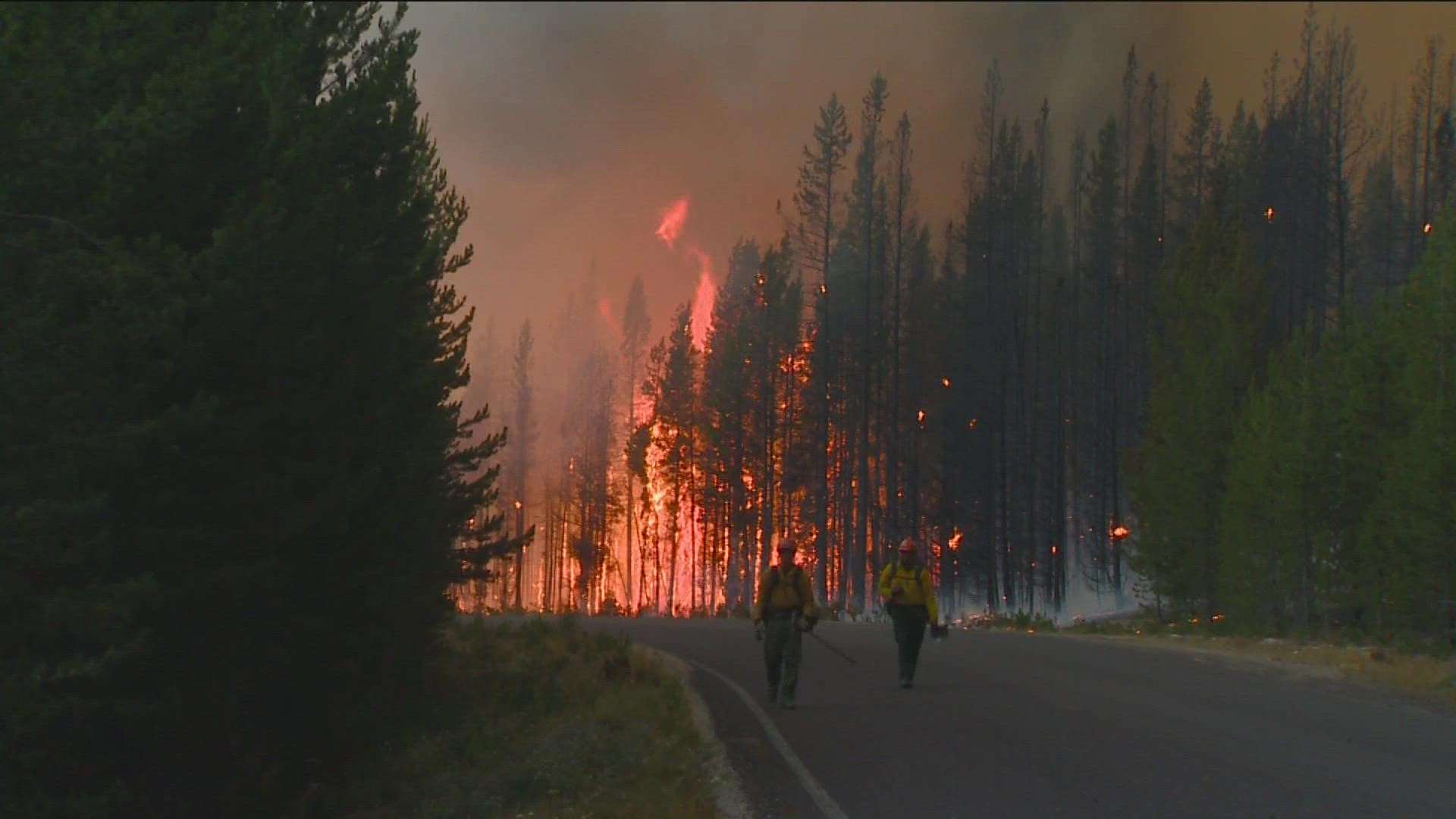BOISE, Idaho — When wildfires are not catastrophic, there are several benefits – some species even thrive.
“When you see a charred stand of trees out there and you think it's a wasteland, there's actually birds that focus in and they rely on that critical habitat,” Idaho Conservation League Public Lands Director, John Robison said.
There are also several positives for people. Robison said wildfires make for good morel mushroom hunting, elk hunting and bird watching.
The environment also gets a refresher, Boise National Forest fire management officer, Rich Zimmerlee said.
“You get that young growth, vegetation growth coming up that provides food, you know, water and cover for wildlife,” Zimmerlee said.
Zimmerlee said wildfires that positively impact the environment burn in a mosaic pattern with varying intensities. After an area is burned, there are less hazardous fuels. These fuels include any flammable material, like shrubs and trees.
This decreases the likelihood and intensity of future fires. However, with climate change, Robison said fire behavior is always changing.
The fire season is now about 75 days longer on average than it was in the 90s, he said.
While Zimmerlee said this year’s fire season is finally starting to slow down, the National Interagency Fire Center recently announced Idaho is in the top five states for acreage burned by wildfires.
Idaho comes in fourth place, with 957 wildfires burning roughly 375,000 acres. Robison said protecting communities from wildfires is always a big priority.
Robison also said prescribed fires play a big role in keeping people safe.
“What want to bring fire back where it belongs and in a way how the wildlife and plants can really respond to it,” Robison said.
Zimmerlee said strategically burning in certain areas gives the landscape an opportunity to experience less intense fire. So, if a catastrophic fire does occur, the results are not as devastating.
Both the Boise and Payette National Forests have several prescribed fires planned in the upcoming months, according to Zimmerlee.
More than 80% of wildfires are human-caused, Zimmerlee said. For example, the Moose Fire, which has burned more than 130,000 acres, was caused by an unextinguished, unattended campfire.
Zimmerlee said it is too soon to tell what sort of benefits will come from the Moose Fire and other wildfires like it.
In some areas, Robison said there is too much wildfire activity, but in others, there is not enough.
“We put out a lot of fires that would have done a great job and great service to us ecologically in terms of wildlife restoration and forest regeneration,” Robison said.
Robison said decreasing the amount of fires started accidentally by people and increasing the amount of prescribed fires is a good way for both people and wildlife to benefit from wildfire.
“When the fuel conditions are manageable and the weather's manageable, and so the wildfire can have its actual ecological benefits, and not be uncharacteristic and out of control," Robison said.
Watch more on wildfires in the West:
See all of our latest coverage in our YouTube playlist:

